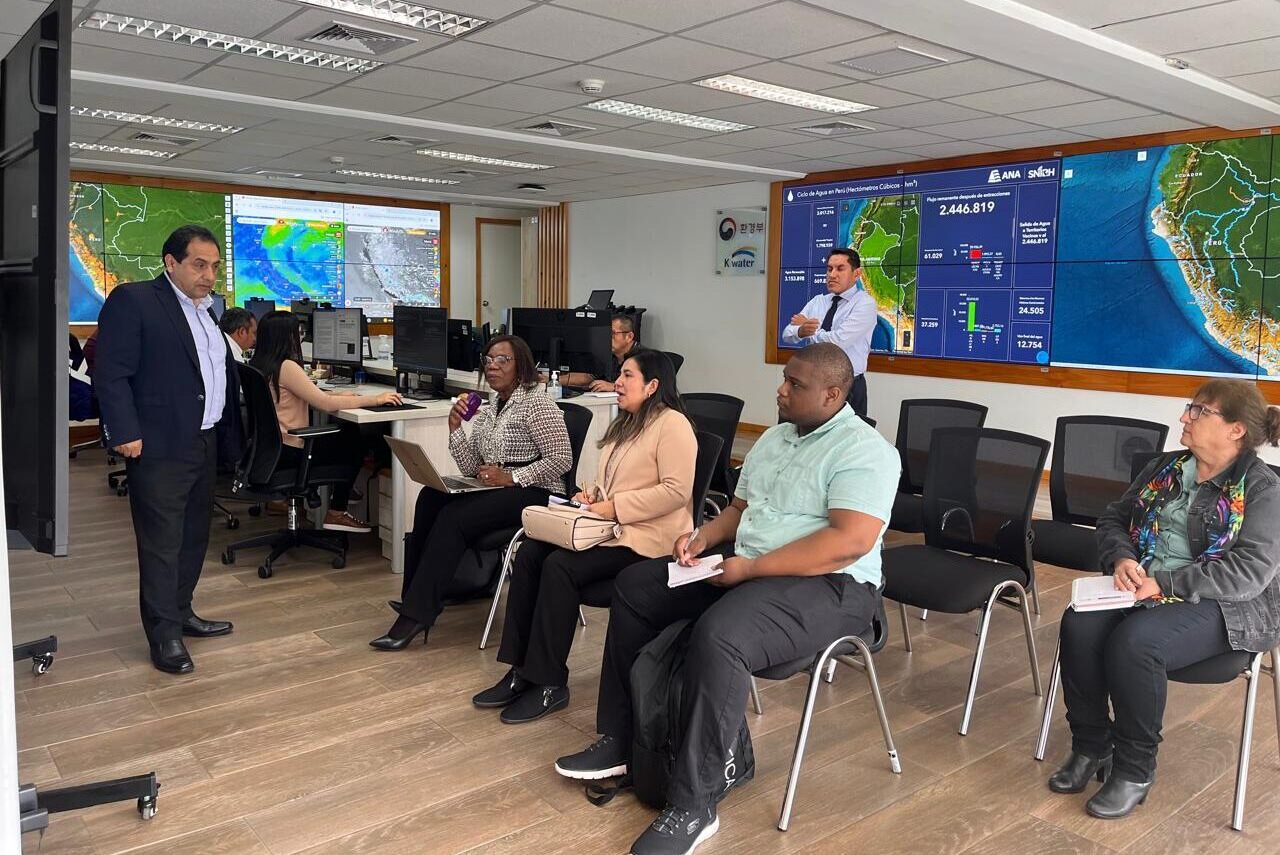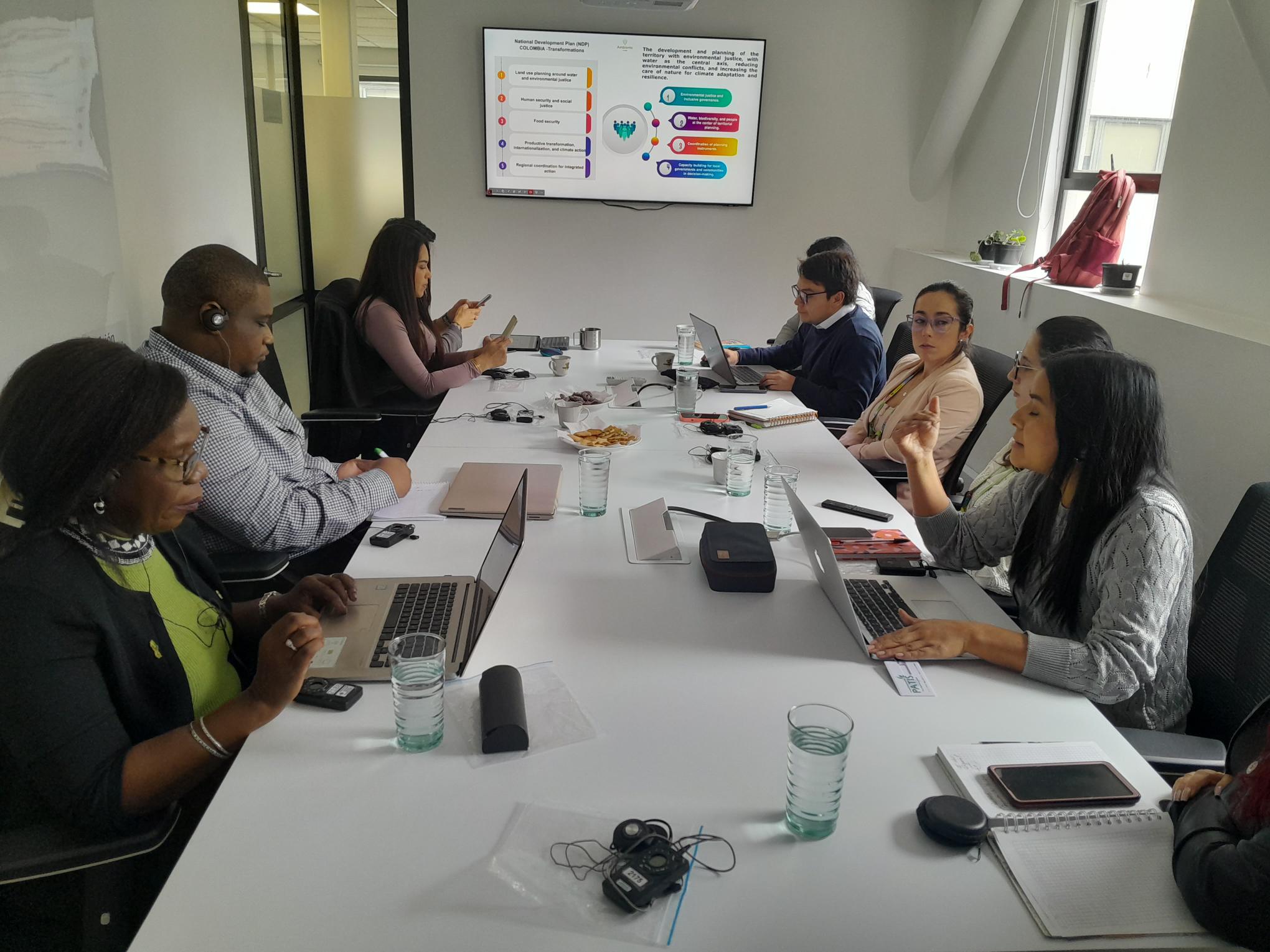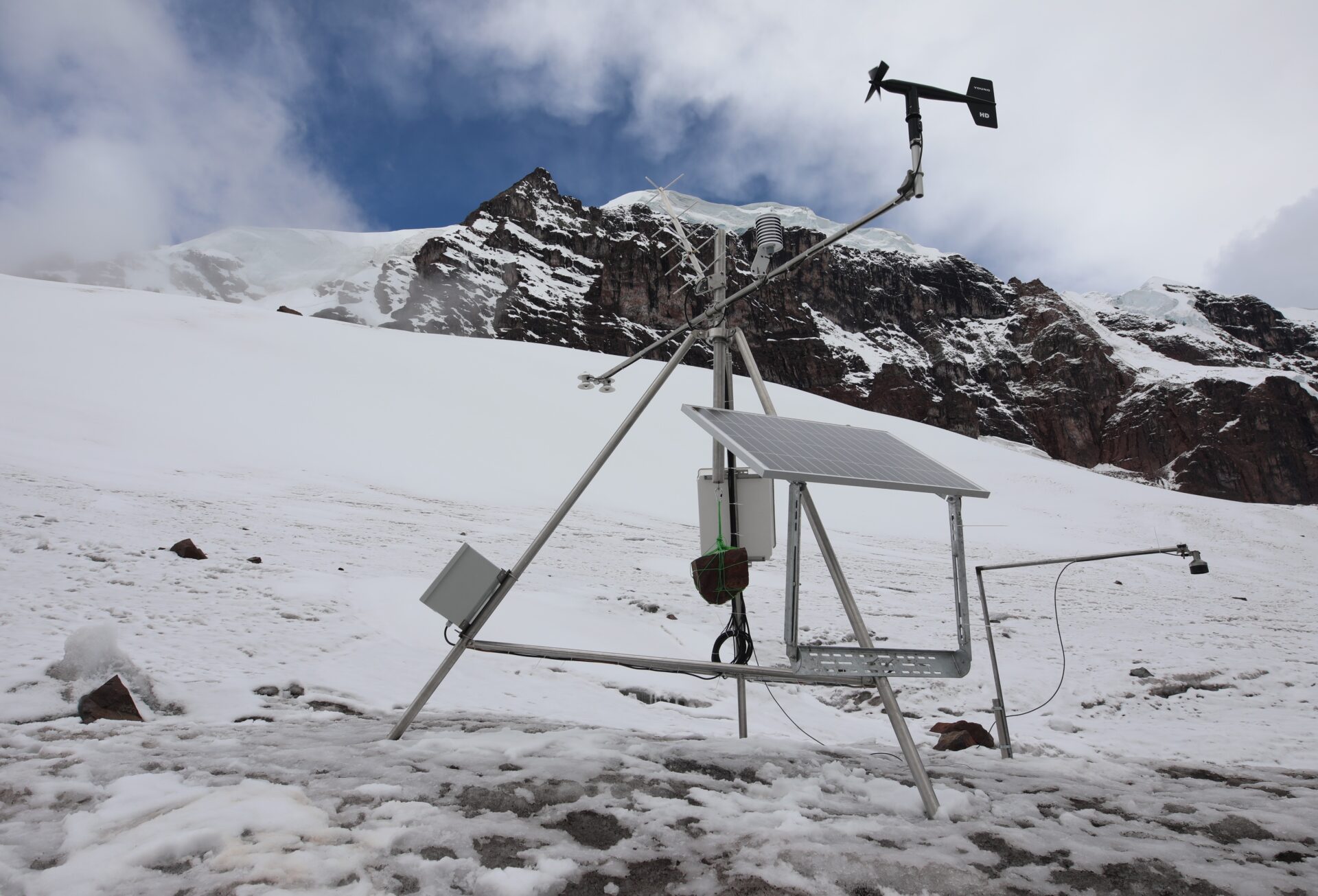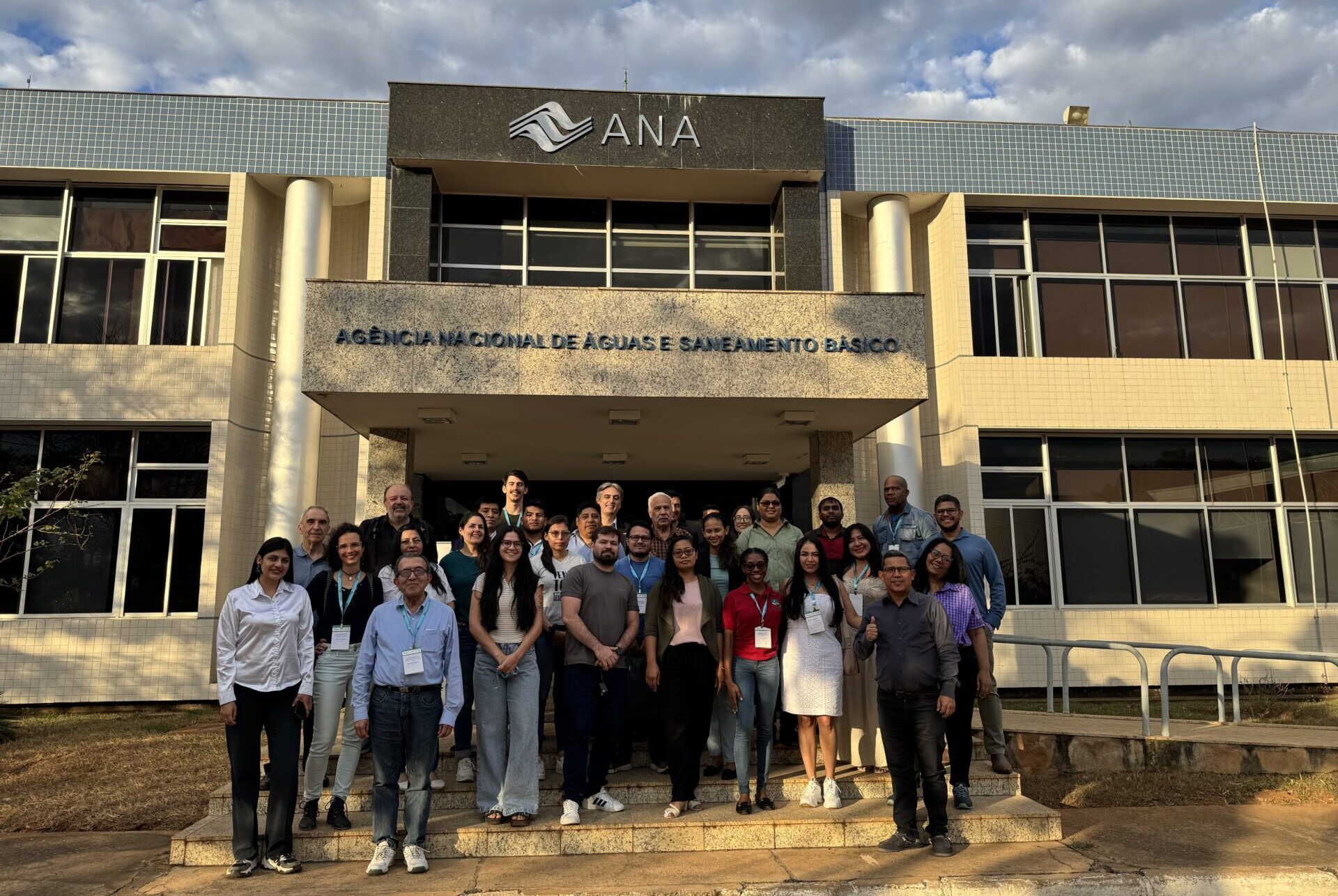Index
Topics
Share
Promoting regional cooperation to ensure that Amazonian countries enhance and strengthen their policies and structures for water resource management is a key strategy of the Amazon Basin Project for implementing Integrated Water Resource Management (IWRM) in the region. Within this framework, a delegation from Guyana, made up of Professor Paulette Bynoe, Institutional Specialist, and Frank Grogan, Hydrology Specialist from the Ministry of Agriculture/Hydrometeorological Service of that country, made technical visits to Lima, Peru, and Bogota, Colombia, on November 28 and 29, 2024.
For Guyana, where water management functions are fragmented and there is limited access to data and information for sustainable management of the resource, the visits to water and environmental authorities in Peru and Colombia provided a valuable opportunity to explore governance models and effective strategies implemented in these two countries and to strengthen its own water governance framework.
“The visits we made to Bogota and Lima were very timely and strategic given the current institutional challenges facing water resource management in Guyana and, more importantly, the opportunities provided under the Low Carbon Development Strategy 2030 to develop the instruments and establish the mechanisms that will strengthen the current governance framework to operationalize IWRM in the country”, said Professor Paulette Bynoe, Guyana’s representative.
Bynoe also pointed out that “the invaluable and transformative information received during interactions with counterparts from Colombia and Peru reaffirm the role of ACTO as a promoter of sustainable development and integrated water policies in the Amazon Basin, strengthening cooperation among its Member Countries in the face of climate change and environmental sustainability challenges”.
The Visit to Peru: Institutional Best Practices
In Peru, the representatives from Guyana participated in meetings with senior officials from the National Water Authority (ANA), including Elena Tanaka, General Manager, and Magdalena Guimac Huamán, Director of Planning and Development for Water Resources. During these sessions, they were introduced to the pillars of the National Water Resource Management System (SNGRH), a model that operates through participatory platforms and decentralized bodies, highlighting its capacity to integrate more than 400 million data points in its National Water Resources Observatory.
- ANA General Manager Elena Tanaka chairs a meeting with the Guyanese delegation.
- Visit by the Guyanese delegation to ANA’s National Water Resources Observatory
Additionally, local initiatives were explored, such as those led by the Interregional Basin Water Resources Council for Chillón-Rímac-Lurín, which organizes environmental awareness activities like “River Week.” Peruvian representatives emphasized the importance of participatory strategies to promote water sustainability and ensure the inclusion of all stakeholders.
Guyana, in turn, expressed interest in adapting elements of the Peruvian model to its national context, particularly in terms of governance and integrated planning, as part of its efforts to consolidate a National Water Authority.
The Visit to Colombia: Experiences in Water Governance and Technology
In Bogotá, the delegation from Guyana met with Colombian authorities and representatives of regional environmental corporations. As part of their visit, the delegation attended sessions at the Ministry of Environment and Sustainable Development of Colombia, engaging with the Directorate for Integrated Water Resource Management (DGIRH). They also visited the headquarters of Corpoamazonia and the Corporation for Sustainable Development of the North and East Amazon (CDA), as well as the Institute of Hydrology, Meteorology, and Environmental Studies (IDEAM), recognized for its leadership in climate monitoring and water resource information systems.
The meeting agenda included presentations on the National Environmental System (SINA) and its organizational structure, the National Policy for Integrated Water Resource Management (PNGIRH), including its planning, governance, and management tools, as well as the experiences of regional environmental corporations such as Corpoamazonia and CDA, which combine technical approaches with community participation. A detailed analysis of water resource monitoring and information systems (SIRH), led by the Governance Group of the Directorate for Integrated Water Resource Management, was also presented.
As a result of the meeting, the relevance of Colombia’s experience for developing an integrated management system in Guyana was highlighted. It was agreed that Colombia would send documents and additional information to support the institutional structuring process in the neighboring country.
For Guyana, these discussions represented a valuable opportunity to learn how Colombia has developed a strong legal and institutional framework for water management, with the potential to adapt these models to their context.
Related news
Post
27 de November de 2025
Four glaciological, meteorological, and hydrometric monitoring stations have been installed in the Vilcanota and Carabaya mountain ranges in southern Peru [...]
Post
3 de November de 2025
The Amazon Cooperation Treaty Organization (ACTO) announces a call for specialized technical services to update the Atlas of Hydroclimatic Vulnerability [...]
Post
8 de September de 2025
The Amazon Basin Project (ACTA/UNEP/GEF) promoted the Regional Course on Space Hydrology: Monitoring river levels and sediment flows by satellite, [...]








